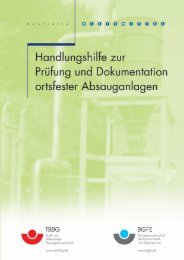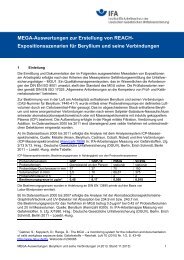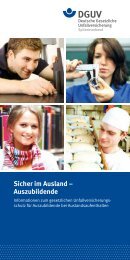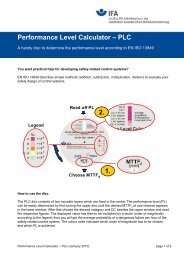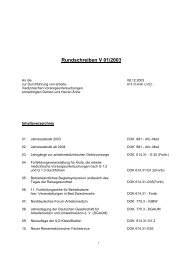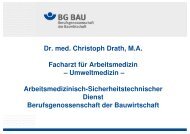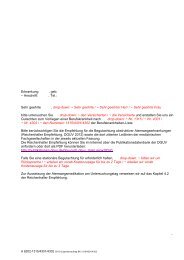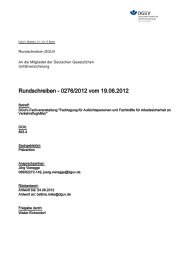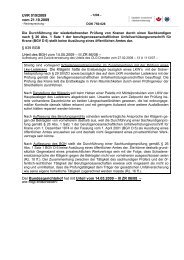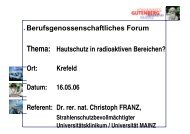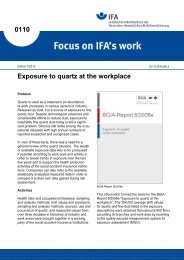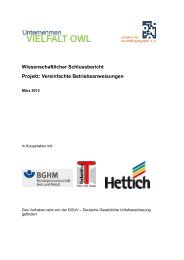Effectiveness of measures to prevent needlestick injuries among ...
Effectiveness of measures to prevent needlestick injuries among ...
Effectiveness of measures to prevent needlestick injuries among ...
You also want an ePaper? Increase the reach of your titles
YUMPU automatically turns print PDFs into web optimized ePapers that Google loves.
5 Cost effectiveness<br />
compliance with the management guidelines. This would have led <strong>to</strong> costs <strong>of</strong> about<br />
US $ 2,300 (calculated by the authors) per injury <strong>prevent</strong>ed, based on a reduction <strong>of</strong><br />
76 NSI. However, the empirical, real cost per NSI was only US $ 325, due <strong>to</strong> a poor<br />
compliance with treatment guidelines, which led <strong>to</strong> costs <strong>of</strong> about US $ 3,700 (calcu-<br />
lated by the authors) per injury <strong>prevent</strong>ed [67]. Two problems make the assessment <strong>of</strong><br />
this publication difficult:<br />
a) There are large inconsistencies in the text and the data reported in the table<br />
regarding annual purchase and training costs and,<br />
b) According <strong>to</strong> the text, the <strong>to</strong>tal purchase costs <strong>of</strong> safety devices and not the<br />
incremental purchase costs were used for the analysis.<br />
Peate described the implementation <strong>of</strong> au<strong>to</strong>matic self-retracting lancet in a population<br />
<strong>of</strong> 477 active-duty emergency medical system workers for a municipal fire department<br />
in the US between 2000 and 2001. The average cost <strong>of</strong> a NSI was US $ 1,035 includ-<br />
ing physician evaluation and counseling, testing and PEP. The author mentioned<br />
additional direct and indirect costs, but it is unclear whether or not these were included<br />
in the estimates. Annual purchase costs increased minimally (US $ 366) and the net<br />
annual savings due <strong>to</strong> use <strong>of</strong> safer devices were estimated at US $ 5,160 [68].<br />
5.2.3.4 Disposal containers<br />
In an early evaluation study, Ribner et al. reported on the introduction <strong>of</strong> a rigid,<br />
puncture resistant disposal system during the year from 1983 <strong>to</strong> 1984. The costs<br />
<strong>of</strong> disposal related NSI were estimated at US $ 183, including "personnel time" (not<br />
specified), HBV testing and PEP. Due <strong>to</strong> the time period, no HCV or HIV testing or PEP<br />
was <strong>of</strong>fered. Costs were high in this study due <strong>to</strong> the fact that, in most cases, the origin<br />
<strong>of</strong> the needle remained unknown. The annual increase in purchase costs was US $<br />
3,081. With a 75 % reduction (n = 21) in disposal related NSI, the net annual savings<br />
was estimated at US $ 750 [78].<br />
Hatcher compared NSI rates with the use <strong>of</strong> a straight drop disposal box vs. use<br />
<strong>of</strong> a letter drop box in a university medical center in the US in 1999. She reported<br />
that the occupational health division conducted a direct cost analysis <strong>of</strong> a single NSI,<br />
Report „Needlestick <strong>injuries</strong>“ 67



